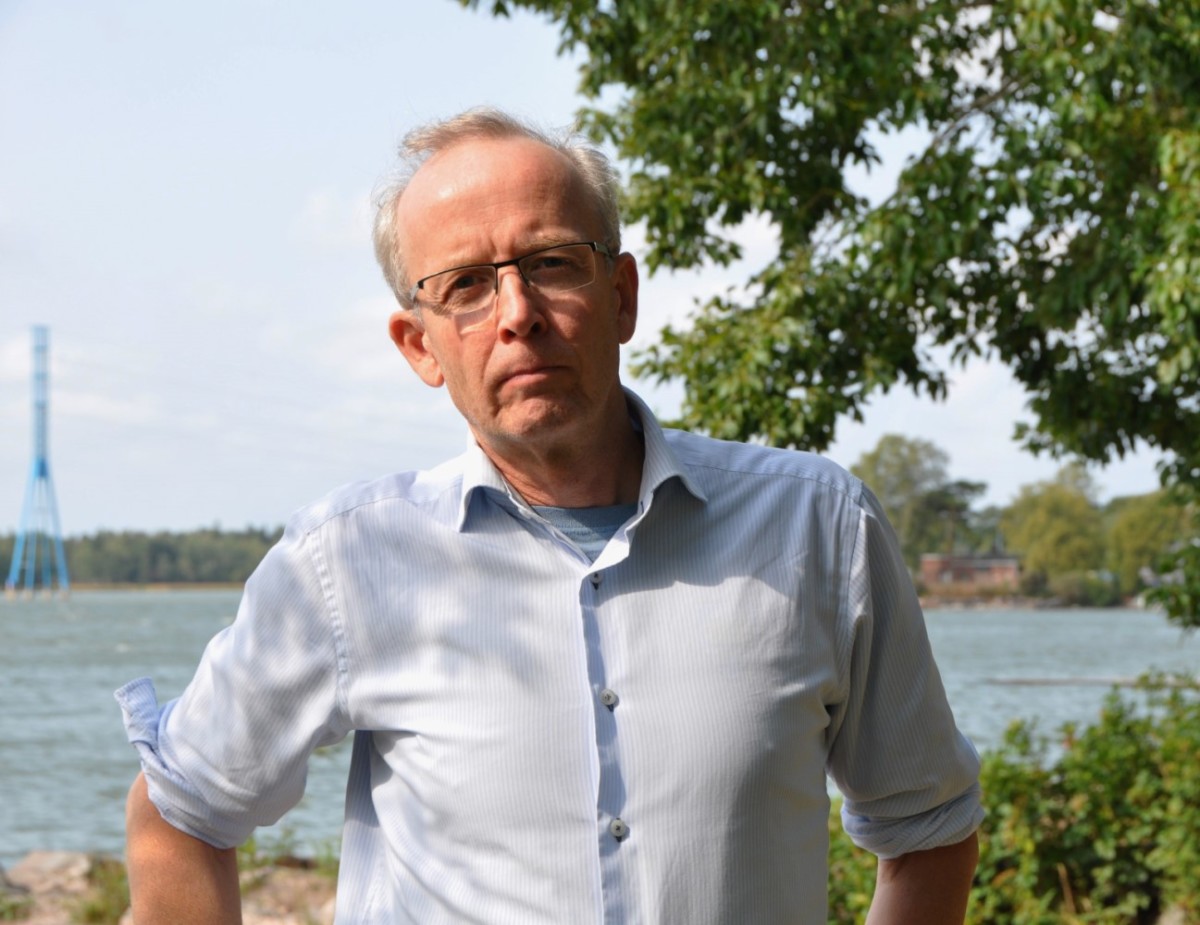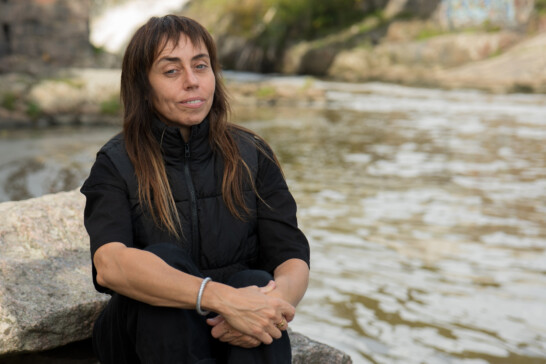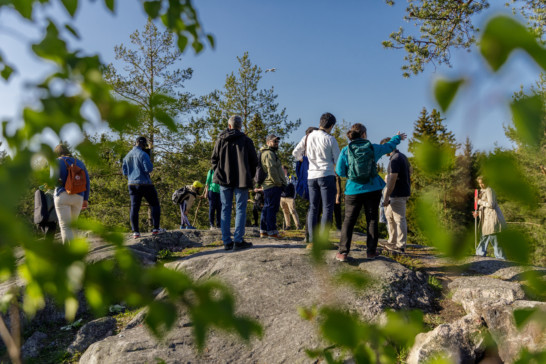News
What is happening in the Baltic Sea?

IHME Helsinki is looking forward to launching the first IHME Helsinki Commission in a couple of weeks. The new commission will be conceived by the Norwegian artist Jana Winderen. Her work focuses on audio environments and ecosystems that are hard for humans to access, both physically and aurally.
As an artist interested in underwater ecosystems, the Baltic Sea is an obvious point of interest for Jana here in Helsinki. She did a Skype interview with Seppo Knuuttila, a limnologist and researcher at the Finnish Environment Institute (SYKE). Seppo is also actively promoting a variety of actions aimed at protecting ecosystems in the Baltic Sea.
Question about blue-green algae
Jana Winderen (JW): I try to talk to as many people as possible to learn about different perspectives on the local environment. Around the Baltic Sea I have worked in different places – Kaliningrad, Riga, Ystad, Gotland – and I have been recording around its Southern parts. Now, I would like to understand more about people’s relationship to the sea around Helsinki, fish-eating habits, blue-green algae, dead zones etc. What is actually happening in the Baltic Sea?
Seppo Knuuttila (SK): I have been working with Baltic Sea topics for two decades, and my main topic has been eutrophication and nutrient loading from the catchment area, which is the original reason for the situation in the Baltic sea right now. For more than a century, nutrient loading has been too high compared with what the Baltic Sea can take. Now, it has decreased since it peaked in the mid-1980’s: phosphorus loading has decreased about 60%, nitrogen loading about one third from the highest levels, but we are still struggling with the same problems. At the moment, the factor that is overshadowing all the positive results is that the oxygen deficit is very bad. The volume of hypoxic and anoxic water is at a record level now. Changes take time. The renewal time for the whole Baltic Sea water volume is about 30 years.
Another factor is that the Baltic Sea is getting warmer due to climate change. During the last century, the surface water of the Baltic Sea has become about three degrees warmer, even the deep water is two degrees warmer, and that warming is accelerating. Two-thirds of the warming has happened since 1990, and it is very closely following the warming of the atmosphere. The farther North we go, the more rapid the warming is. Warming makes the oxygen deficit worse. All the processes causing the deficit are being accelerated with the warming of the water. This is very worrying right now. This means that algae blooms are getting worse, too. HELCOM (Baltic Marine Environment Protection Commission), which aims to protect the Baltic Sea, has very ambitious targets for cutting nutrient loading. Their Baltic Sea Action Plan aims to bring the Baltic Sea back to a good ecological status. But climate change was not taken into account when those targets were set in 2007. If we don’t manage to reduce the nutrient loading, the blue-green algae blooms can be ten times worse by the end of the century than they are in today’s climate.
Scientist at risk
SK: Ten years ago I was also doing research in Russia, in the vicinity of St Petersburg. In 2011, my team managed to find the biggest single source of phosphorus loading in the whole Baltic Sea catchment area. This fertilizer factory released one-fifth of the Sea’s total annual phosphorus load. During my field research, I was also arrested by the Russian security authorities and spent some time in a Russian jail. Uncovering a giant source of emissions was undoubtedly considered negative for Russia’s reputation. However, the case had a happy ending, in the sense that the fertilizer factory took the necessary measures and, within a short period of time, phosphorus discharges were reduced to one percent of the original.
JW: That´s amazing. I have also worked in Russia, in Moscow, where I did an exhibition in one of the old gas stations, right next to the Kremlin. I was also in Nikel doing some recordings, and I was told to get away from the neighborhood of the factory.
SK: No wonder, the sulphur dioxide emissions from that single factory are equal to the emissions in the whole of Finland.
Global warming accelerates change
JW: I think the Baltic Sea is becoming a kind of indicator of all these changes, just like the melting ice in Greenland. Some years ago, I was playing the sound of the melting ice in Greenland. People were very affected by that sound. That is why I’m using sound. It is more emotional. It has an effect on people. The same happens when you play the sounds of the animals living in the sea. There must be a considerable decrease in the number of birds, too? I have read that birds are getting smaller?
SK: Yes, I’m also an ornithologist. I have read papers that claim that birds get smaller when the climate changes, and the same happens to the fish. This is happening in the North especially, because it is easier to survive in the colder climate when you are big. But, when the climate gets warmer, you don’t have to be so big. Climate change is going to be very tough on the Northern species, because, for example, terrestrial birds cannot migrate further North because there is sea there. But there are also good examples of how protection can work. In my childhood in the early 1970’s, we had a serious problem with environmental toxins like PCB and DDT compounds. Predators at the top of the food chain, such as seals and white-tailed eagles, got a lot these compounds in them. Their reproduction was disturbed and their numbers decreased alarmingly. However, now, white-tail eagles have recovered. This year, there is even one pair nesting in the nature conservation area practically in the middle of Helsinki.
JW: We should really make our cities welcoming to other species, instead of pushing them outside the city. Our lifestyle is so unwelcoming to other species, and it is us that have taken the space from them.
What can I do about it?
SK: Three years ago, we built a tool, the Baltic Sea Calculator, at the Finnish Environment Institute and the Natural Resources Institute, for ordinary citizens to calculate their Baltic Sea footprint. When you ask people what they think they personally can do for the Baltic Sea, they often reply that they can’t do anything personally. Instead they blame cities, factories and farmers. They don’t see, for example, the connection with what they are eating, and the role it plays in their own nutrient footprint. Farmers should not be blamed, because they produce what we eat. Without a change in our diets the system is not going to change. Recently, the issue of meat eating has been discussed a lot, because it plays a role in climate-change mitigation, but it is even more important when we talk about the Baltic Sea. Approximately 60% of our own Baltic Sea footprint comes from what we eat, and specifically from its production. At least 70% of Finland’s arable land is used for the production of animal-based food. With the Baltic Sea Calculator everybody can calculate how big their Baltic Sea footprint is; how much phosphorus and nitrogen we produce each year in the Baltic Sea due to our own lifestyle and consumption habits.
JW: It is important that we can show them what they personally can do, and keep repeating it.
SK: People in Finland are very concerned about the condition of the Baltic Sea. Now that we have had this very warm winter, with no snow at all in Helsinki, the rivers have been flooding for several weeks, and we know that, this winter, the nutrient load has been exceptionally high. People keep asking how this will affect algal blooms in the coming summer. Reducing emissions from food production and mitigating climate change are key issues for the state of the Baltic Sea.
Further information:
HELCOM – Baltic Marine Environment Protection Commission
Folke Rydén – Film & Documentary – Shipping Polution

